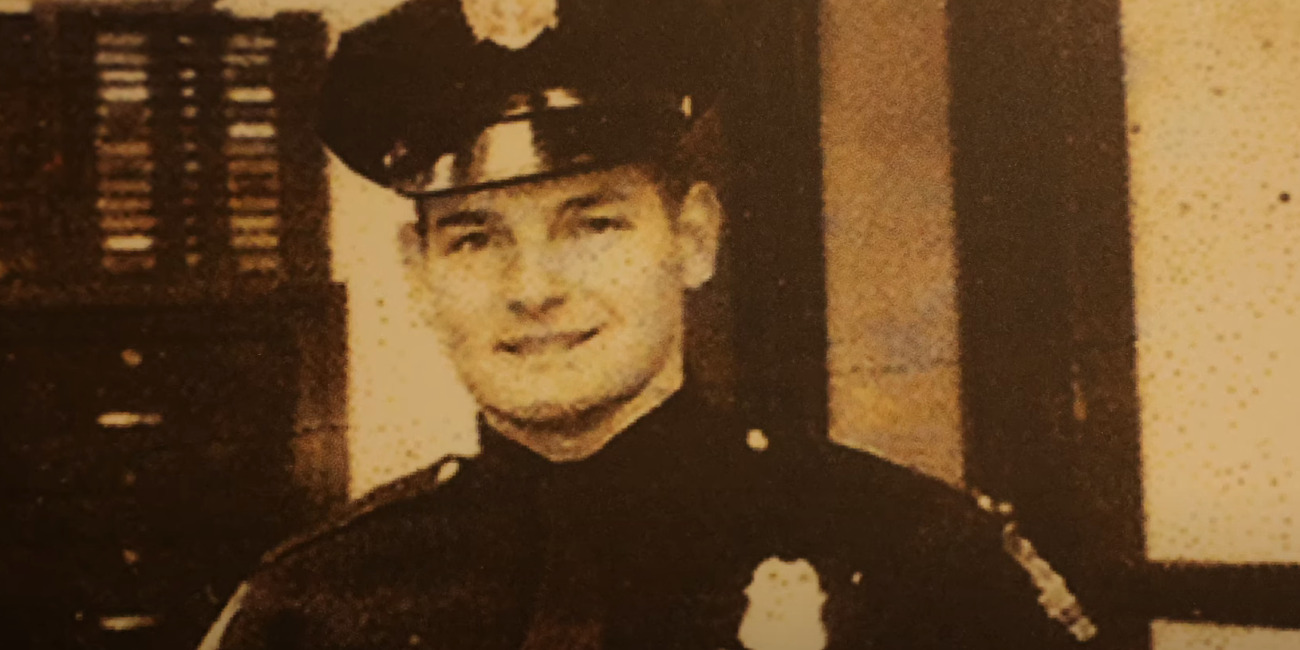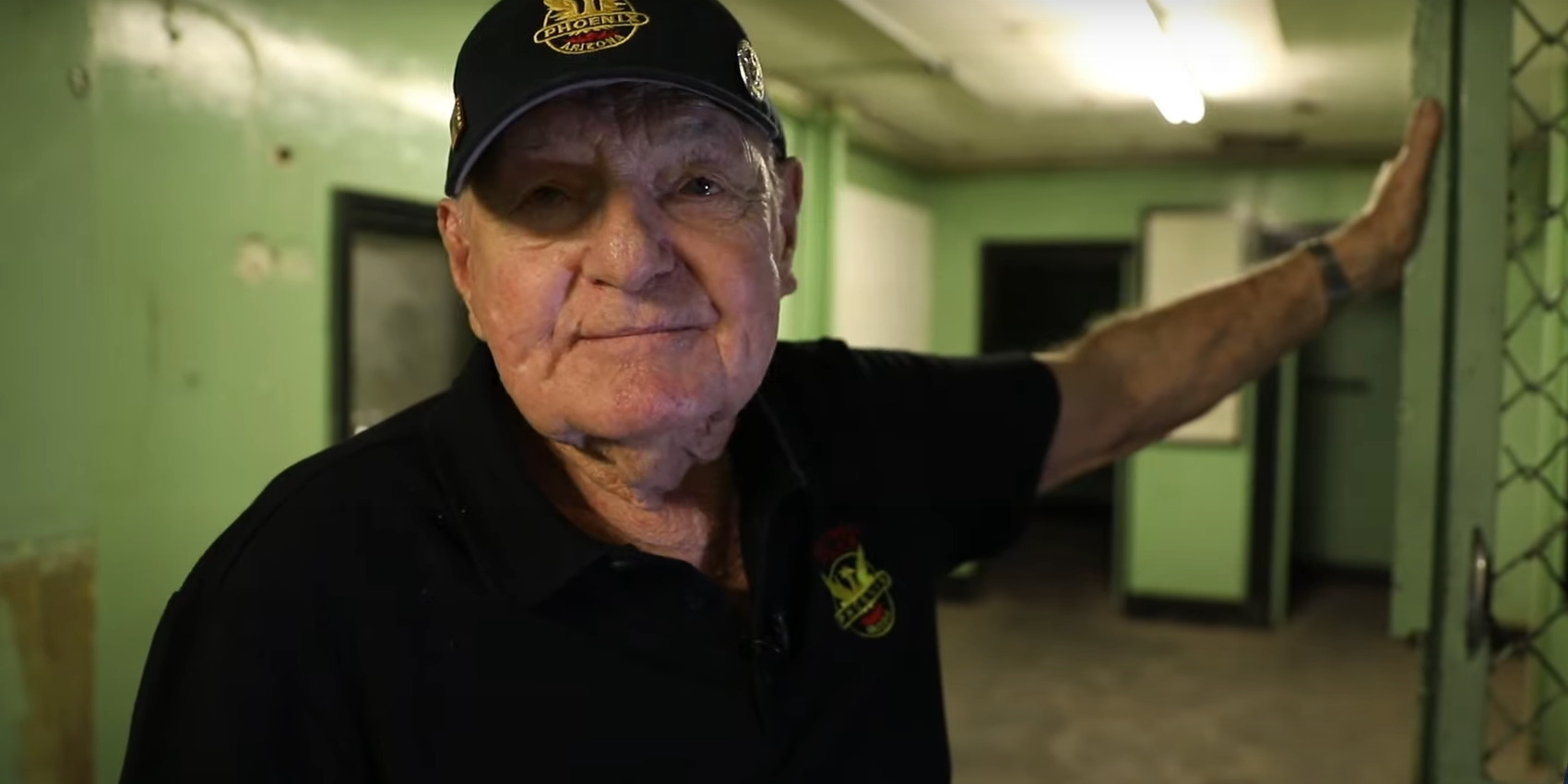‘Miranda’s Victim,’ a film detailing the criminal case that led to the inception of the Miranda Warnings, follows the narrative of Patricia “Trish” Weir, the young girl who fell victim to Ernesto Miranda’s abuse. In 1963, Ernesto kidnapped and raped a young 18-year-old, Trish, who went on to report the incident and seek justice for herself. As such, after Carroll Cooley, a local Arizona detective, gets the case assignment, he helps the young girl pursue and identify her assailant. The investigation ends with a written confession and an imprisonment conviction for Miranda.
Nevertheless, a couple of years later, Trish’s abuser sees release due to a Supreme Court ruling dismissing Miranda’s confession as inadmissible. Thus, Trish and others involved in Miranda’s initial conviction, including Cooley, re-enter the cold and unsympathetic courtroom. Since the film is based on a true story and crafts its characters on real-life individuals, Detective Carroll Cooley’s instrumental role in Miranda’s court cases as the arresting officer may spark curiosity among viewers about his current whereabouts.
Who Is Carroll Cooley?
Carroll Cooley was born in Bald Knob, Arkansas, on August 25, 1935, to John and Donna Mae, a car mechanic and a housewife, respectively. It wasn’t until his move to Phoenix, Arizona— that Carroll Cooley began his career in law enforcement. Soon after joining in 1958, the man earned a promotion and became a Detective. Thus, by the time Cooley received Weir’s case assignment in 1963, he had a few years of experience to his name.

As such, Cooley was able to track down and arrest Weir’s kidnapper and rapist, Ernesto Miranda, by March 13, 1963, through swift police work and the woman’s courageous help. Furthermore, he and his partner managed to extract a written confession from Miranda, wherein the latter recounted his incriminating experience of the night of Weir’s assault. Although this piece of evidence went on to play a crucial role in Miranda’s conviction, it ended up triggering future problems in proving the man’s guilt.
In 1966, a ruling passed by the Supreme Court stated the inadmissibility of confessions collected by the police without informing individuals of their civil rights. As a result, Miranda’s conviction was overruled, leading to a second trial against the man. Despite the impermissible confession, the prosecution was able to convict Miranda on the charges of kidnapping and rape.
Thus, Cooley’s evidence, Miranda’s signed confession, ended up playing a significant role in the latter’s case and paved the way for the modern conception of the “Miranda Rights,” as the public calls it. Even though they were ultimately inadmissible, Cooley commented on them in the positive during an interview with The Republic in 1976, the same year that Miranda died. “He [Ernesto Miranda] was not un-knowledgeable about his rights,” said Cooley. “He was an ex-convict and served a year in prison [for a previous auto theft conviction] and had been through the routine before.”
Carroll Cooley Served On The Force For 20 Years Before His Death
Although Cooley went on to serve in the police force for two decades, his involvement in the Miranda case remained one of his most publicly significant professional undertakings. But of course, the man also worked on several vital cases in his long career, even sustaining an injury on the field in August 1963 when he got shot in the head in pursuit of a robbery suspect. Fortunately, the Detective was able to recover from his injuries completely.

As such, Cooley continued his work as a Police Detective and simultaneously completed a Bachelor’s Degree in Public Management from St. Mary’s College of California in 1977. While working in the city’s Maryvale precinct, the man earned another career milestone by rising to the rank of Captain. Afterward, in 1978, Cooley retired from the force.
According to the Phoenix Law Enforcement Association, Cooley went on to work with the Arizona Motor Vehicle Division and the Arizona Department of Public Safety following his retirement. The man also volunteered at the Phoenix Police Museum, which has held an exhibition on the Miranda case since 2013.
Consequently, even after his retirement, Cooley continued to dabble in public relations whenever possible and upheld a relationship with his community. In his personal life, the man was initially married to Lois Ellis, with whom he had two kids: a son, Farrell, and a daughter, Brenda Barcellos. After his first marriage ended in a divorce, he went on to marry again, ending up with Gleora, nicknamed Glee.
Alongside his two kids, Cooley also had two stepchildren, Mark Scheite and Caron Reynolds. The man also had another son, Kenneth, who died in 2014. Cooley had 12 grandchildren and 18 great-grandchildren, rounding off his big, happy family. Sadly, Cooley passed away on May 29, 2023, due to chronic obstructive pulmonary disease. As shared by his wife, Glee, the man, at 87, died in his sleep. Ultimately, Cooley’s legacy will live on through his family, as well as his historic contribution to Miranda’s case, which led to the birth of Miranda Rights in the country.
Read More: Patricia “Trish” Weir: Where is “Miranda Rights” Survivor Now?


You must be logged in to post a comment.